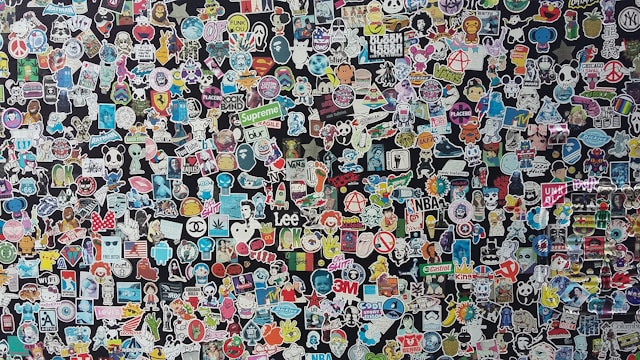When you run a business or brand, you often have a lot of competition to work against. In any industry and any location, you’ll need to work hard to stand out from the crowd. And die cut stickers could help you accomplish that goal. Stickers, in general, are great marketing and promotional materials. But if you don’t use them properly, they could harm your brand rather than help it. Follow this guide to learn how to use die cut stickers to help your brand stand out from the competition.
What Are Die Cut Stickers?
Most stickers come in a variety of regular sizes and shapes. The most common shapes are circles, squares, and sometimes ovals. When you order regular stickers, you have to choose a specific size and shape and then fit your design around it. With die cut stickers, however, you don’t need to limit your creative potential. The die cut process allows you to create any sticker design at any size or shape you can imagine. This additional freedom and flexibility can help you create unique marketing and profitable stickers that will certainly help you stand out.
Tips for Designing Die Cut Stickers
Designing the right stickers is crucial for any marketing or profit venture. When making die cut designs, you aren’t confined to specific sizes and shapes, which means you can be more creative. But it also means you need to be more strategic with your choices as well. Here are some factors to consider when creating your sticker design.
The Purpose
Designing stickers for profit will look different than designing stickers for marketing. If you plan to sell your stickers, you need to focus your design more on aesthetic value and quality. But if you’re designing stickers for promotion, you need to pay more attention to the brand value.
Whenever you’re creating marketing or promotional items, you need to make sure they support your brand. This means including the right color scheme, fonts, and imagery. For example, if you run an herbal tea shop that uses natural imagery for your logo and website, you don’t want a sticker with a robot on it. Maintaining brand integrity across promotional materials is the best way to help build brand recognition and support your marketing goals.
Your Design Skills
If you’re creating a sticker that’s meant to just be your logo or something simple to hand out, then you probably don’t need much in the way of design skills. But if you’re creating something new or are planning to sell your designs, you want to make sure that your stickers are professional and aesthetically pleasing. If you aren’t an artist or don’t have the time to learn digital design skills, then you may want to consider hiring someone to help with the design. Spending the extra money on a worthwhile design is often better than creating something that people won’t buy or that creates a negative impression of your brand.
Photo by Done By Alex on Unsplash
Formatting Guidelines
When designing your sticker, it’s also important that you pay attention to your printer’s formatting guidelines. While you can be creative with the size and shape, you still need to make sure your file is properly formatted for printing. Many image editing software options default to optimization for the screen. But if you try to print those images, they often come out distorted or blurry. Your printer should have a detailed list of formatting guidelines, but these are the main ones to double-check.
Bleed Area
While printing machines are more efficient than humans, there is still a small margin of error that could occur. If there is shifting during the printing and cutting process, then you might lose a portion of your design. For this reason, it’s crucial that you include a ¼” bleed area around your sticker’s main image. This can help you avoid losing important design elements.
Color Spectrum
Most image editing software will default to the RGB color spectrum. This is because that’s how computer screens filter colors to view. However, physical printers use four colors of ink (cyan, magenta, yellow, and black) to create colors. Therefore, it’s crucial that you change the color spectrum to CMYK for your design. Because screens filter colors differently, it’s often a good idea to print a test page to ensure the colors are what you want before hitting send.
DPI
The DPI (dots per inch) dictates how many dots, or pixels, are displayed per inch of your design. The default tends to be 75, as most screens can display low DPI images with a higher quality. However, if you were to print that image, it would likely come out blurry or distorted. Printed products should have a DPI of at least 300. The higher the DPI, the higher the quality of your finished product.
Finding the Right Printer
Even if you have a great sticker design, you still need to have the right printer for the job. When looking for a printing company, always pay attention to the location and other services offered. A company in a centralized, urban location will likely have greater options for shipping and delivery. And a company that offers a wide range of printing services could help you with additional marketing efforts down the line.
Get Your Die Cut Stickers Today with Guru Printers
At Guru Printers, our company is dedicated to helping your company grow. With our die cut stickers, you could help your brand stand out and make a positive first impression among potential clients and customers. You can start by filling out our online order form. If you have any questions or need help with your order, call us at (213) 513-6533 or send an email to [email protected].
